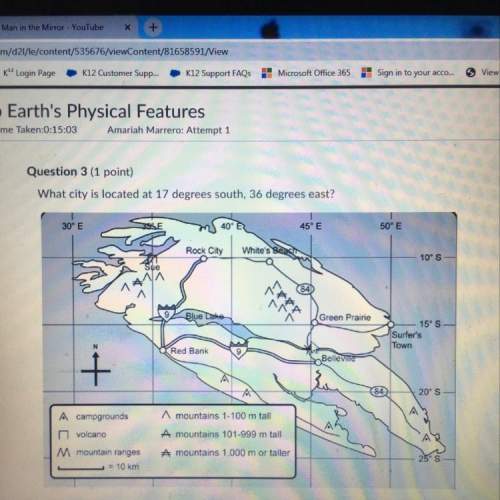
Chemistry, 07.10.2019 21:30 keigleyhannah30
You stop along the side of the highway to look at a 1,000 m. high outcrop. you decide to climb tothe outcrop and look at the rocks. the base of the outcrop has a layer of olivine and calciumplagioclase. 100 meters up the cliff the rock is pyroxene and a sodium-bearing calcium plagioclase. at 350 meters, the rock contains amphibole and a calcium-bearing sodic plagioclase. at 650meters, the minerals are biotite and sodium plagioclase. from 900 meters to the top the rock isgranite. explain how this out crop could have been formed.

Answers: 2


Other questions on the subject: Chemistry


Chemistry, 22.06.2019 04:40, khan2491
Silver tarnishes as silver metal reacts with hydrogen sulfide, h2s, in the air. in this reaction, dark silver sulfide, au2s, covers the surface of silver. when silver is polished, this coating of silver sulfide can be removed from the surface. this makes the silver shiny again. enter the coefficients that balance the tarnishing reaction equation. (type 1 for no coefficient.)
Answers: 2

Chemistry, 22.06.2019 07:50, carlosiscr7
Many reactions take place in aqueous solution. when potential reactants are mixed, a reaction will occur if there is some driving force that favors the formation of products. it is often convenient to categorize reactions in terms of these driving forces: precipitate formation, in which an insoluble solid is formed, weak electrolyte formation, as in a neutralization reaction involving water, or transfer of electrons, as in a redox reaction. these reactions can be represented by full molecular equations, which contain all species in the reaction mixture, or by net ionic equations, which show only the species that actually undergo a change. the latter does not contain the spectator ions, which do not undergo a net change or do not take part in the reaction. part a when the following two solutions are mixed: k2co3(aq)+fe(no3)3(aq) the mixture contains the ions listed below. sort these species into spectator ions and ions that react. drag the appropriate items to their respective bins. view available hint(s) spectator ions ions that react part b what is the correct net ionic equation, including all coefficients, charges, and phases, for the following set of reactants? assume that the contribution of protons from h2so4 is near 100 %.ba(oh)2(aq)+h2so4(aq)→ express your answer as a chemical equation. view available hint(s) nothing provide feedback
Answers: 3
You know the right answer?
You stop along the side of the highway to look at a 1,000 m. high outcrop. you decide to climb tothe...
Questions in other subjects:



Physics, 30.01.2020 02:56

Biology, 30.01.2020 02:56





Mathematics, 30.01.2020 02:56

Biology, 30.01.2020 02:56




